Going to college or university is the first long-term stay away from home for most new students. Alongside the really boring stuff—bedding, clothes hangers, notepads, and coffee cups—there’s a lot of new tech to take, and most freshmen miss some of the electronic essentials that they all will need from day one in their college dorm.
You know that you’ll need a computer—most likely a portable laptop, and we recommend the best MacBook for students elsewhere. Many students—particularly those studying science subjects—find a tablet such as an Apple iPad is more convenient, and so you can read our list of the best iPads for students, too. Indeed, with the addition of a supporting keyboard, the iPad can also function as well as laptops for written assessments: see our recommendations for the best iPad keyboards.
We surveyed a bunch of second-year students and their parents to come up with this list of the essential tech and gadgets every student needs in their room and for going about their daily college life.
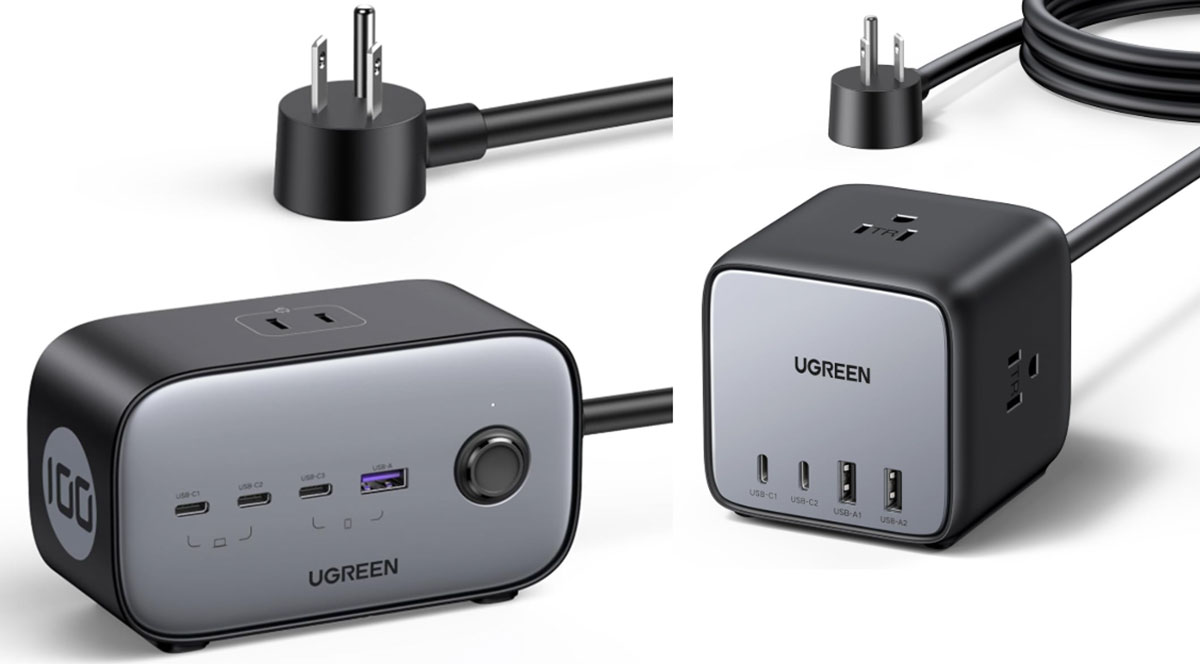
Ugreen
Charging station
The number-one forgotten electronic item when heading off to college is the humble charging station, power strip, or plug extension cord. Dorm rooms—some designed before smartphones and even laptops even existed—have precious few power sockets, and the one you eventually find is sure to be located as far away as possible from where you need it. A power strip will solve nearly all a student’s room’s charging problems. Look for one with a cord of at least six feet since power outlets are always in the wrong spot.
Our favorite power strip is the Ugreen 100W USB-C GaN Charging Station (also at Amazon or Amazon U.K.) that features three USB-C ports (2x 100W and 1x 22.5W), one USB-A (22W), and three extra AC plug sockets. That should be enough for most people. If not, buy two. The 100W USB-C ports can charge even a large laptop with ease.
Ugreen has a smaller cube-shaped power extender, too: the 65W USB-C GaN Charging Station (Amazon or Amazon UK), with two USB-C (both 65W) and two USB-A (18W) ports, and three AC outlets. For charging, 65W is enough power to keep a MacBook Air or a 14-inch MacBook Pro filled up.
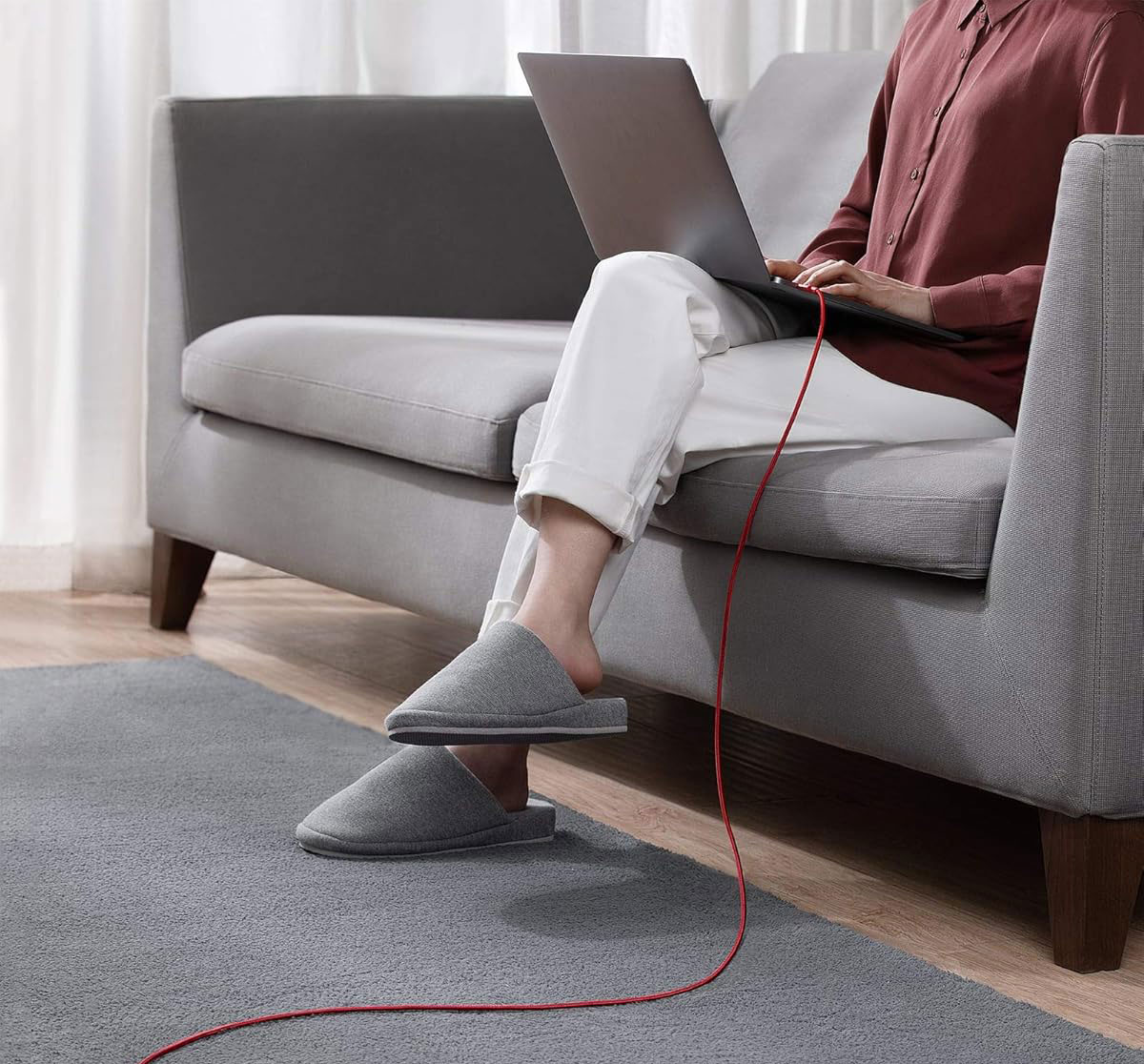
Anker
Long cables
All of your Apple devices use USB-C, but you might still have some USB-A and MicroUSB devices around. Also, it’s a common misconception that all USB-C cables are basically the same, but they’re not. Some are for data transfer only. And those that do support charging vary in how fast they can charge. iPhones and tablets require around 30W of power for fast charging, while a MacBook Pro needs 60-100W. The easiest solution is to choose a universal cable that supports up to 100W so you can use it with all your devices.
We recommend the 100W Anker USB-C to USB-C Cable, which is available in black, silver, or red, and in lengths of up to 10 feet. I have a few of these at home, and I bought my daughter two for college. You can buy them singularly for around $10 or in packs of two or three.
That cable will also transfer data, but slowly at 480Mbps. For both speedy data transfers and charging, the most dependable solution is a Thunderbolt or USB4 cable. These look and work just like USB-C but offer superior data speeds for MacBooks and the iPad Pro. The $19/£20 Ugreen USB4 USB-C to USB-C Cable is 3.3-feet long and offers as fast charging support as you can get (240W) and super-speedy data (80Gbps). Longer Thunderbolt cables cost a lot more: the Anker 6ft Thunderbolt 4 Cable costs around $80/£60.
Finally, some older iPhones, AirPods, and iPads use Apple’s Lightning connector, so you need a USB-C to Lightning cable. For a long Lightning cable, try the 10-foot Amazon Basics USB-C to Lightning Cable ($14/£11) available in either black or white. Anker has a slightly shorter 6-foot Lightning Cable for $17/£17 that we’d recommend for its better durability and brighter color options (black, silver, red, and gold).
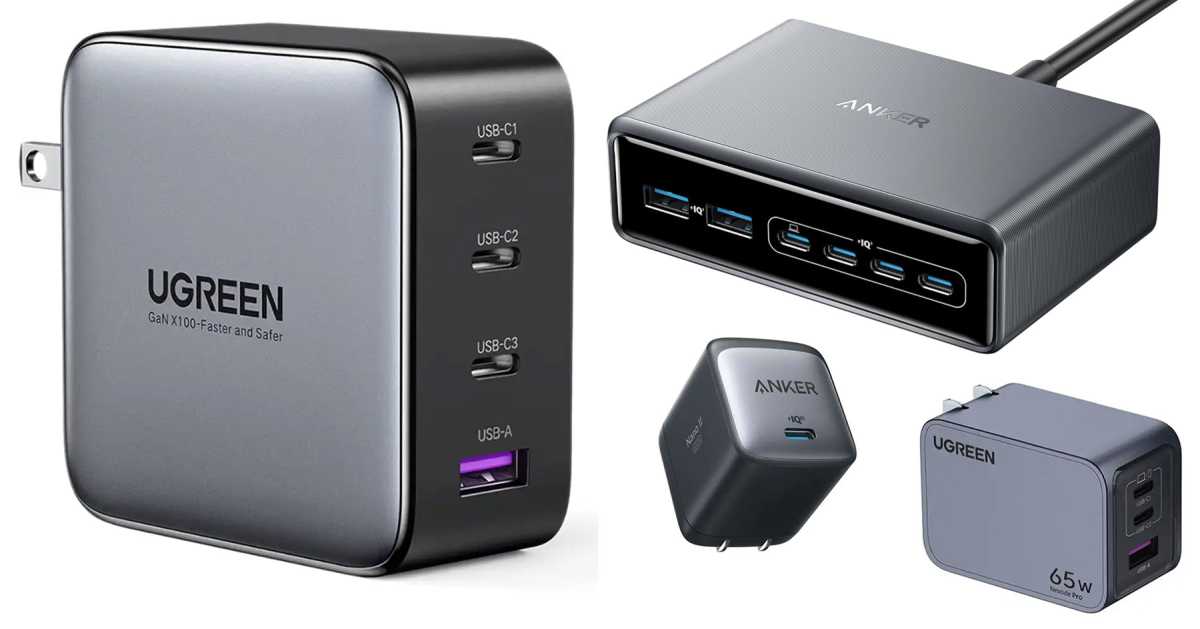
Simon Jary
Extra power adapters
It’s seems obvious, but extra power adapters are the easiest thing to forget—and even if you remember, you’ll want to get the right one. You’ll be looking for chargers with at least one USB-C port—some have two or more to be even more useful. The more ports a charger has, the fewer chargers you’ll need to bring.
The $50 Anker Prime 100W USB-C Wall Charger (or £60 at Amazon UK) has three ports (two USB-C and one USB-A) and is small enough to fit in a pocket if you want to carry it with you. For just a few bucks more, the $99 Ugreen Nexode 200W USB-C Wall Charger (or £89 at Amazon UK) has four ports (3x USB-C and 1x USB-A) and can pump out up to 200W at the same time.
Those two wall chargers plug directly into a power socket, whether that be in the wall or on a power strip. You can also buy chargers meant to sit on a desk with one long cord to the wall socket. The $79/£79 Anker Prime Charger (200W, 6 Ports, GaN) has six ports—4x USB-C and 2x USB-A—and can handle more power (200W) at one time.
If you really just need one port, then USB-C wall chargers come in very small sizes—small enough to lose in your backpack if taking it to keep your laptop or phone charged in the lecture hall. Take a look at the tiny Anker Nano Charger ($35/£24), which can power a laptop at 65W and measures about 1.6 inches cubed.
Wireless charger
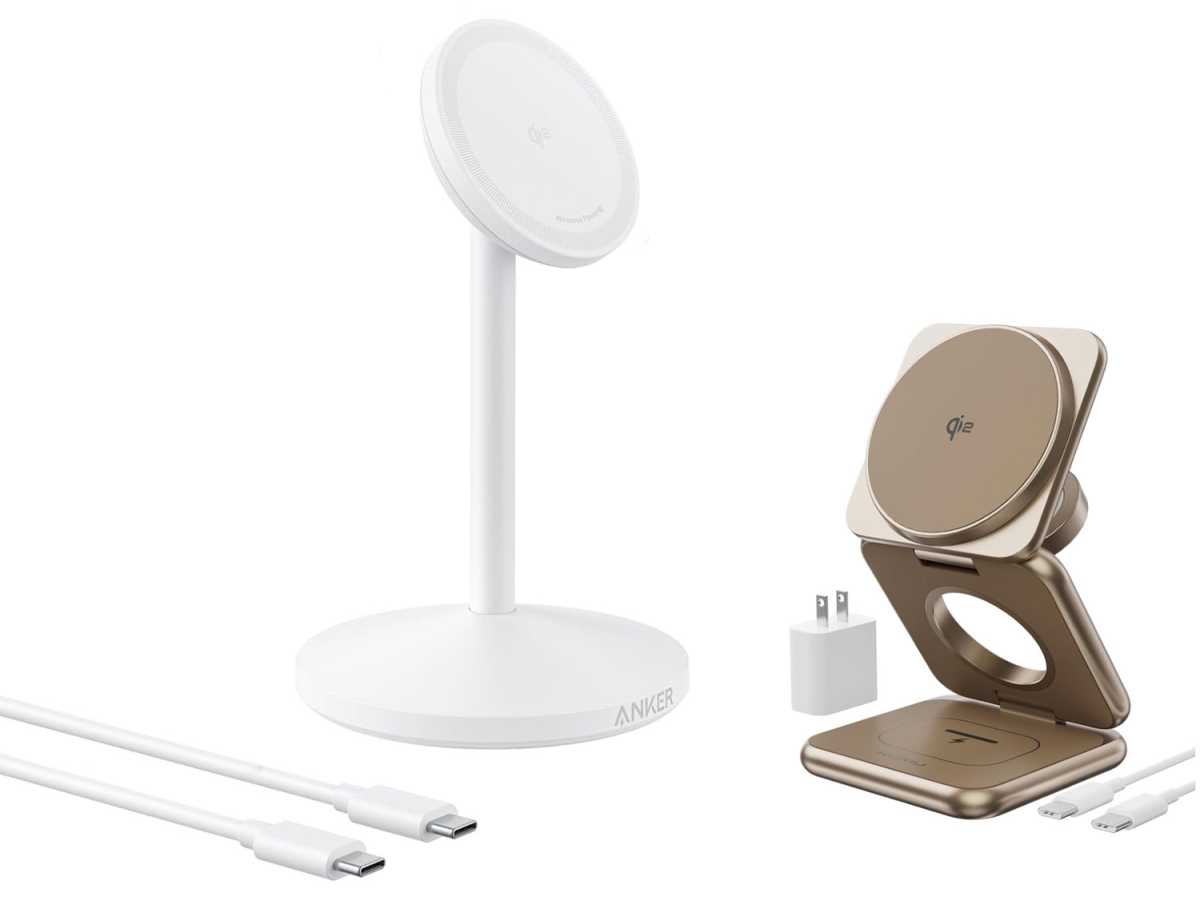
Simon Jary
Since every college student reaches for their iPhone as soon as they wake up, a wireless charging stand is another student priority tech essential. All iPhones 12 and newer will be compatible with a magnetic wireless charging stand, which can double as an alarm clock when they’re on a nightstand.
One of the easiest to pack is the Kuxiu Folding 3-in-1 Charging Station, which is small enough to fit in your pocket. It starts at $45/£45 for a 3-in-1 charger that tops out at 7.5W or $79/£79 for the faster Qi2 version at 15W. Both charge the iPhone, Apple Watch, and AirPods at the same time. If they just need to charge an iPhone, look at the simple Anker MagGo Charging Stand ($30/£39).
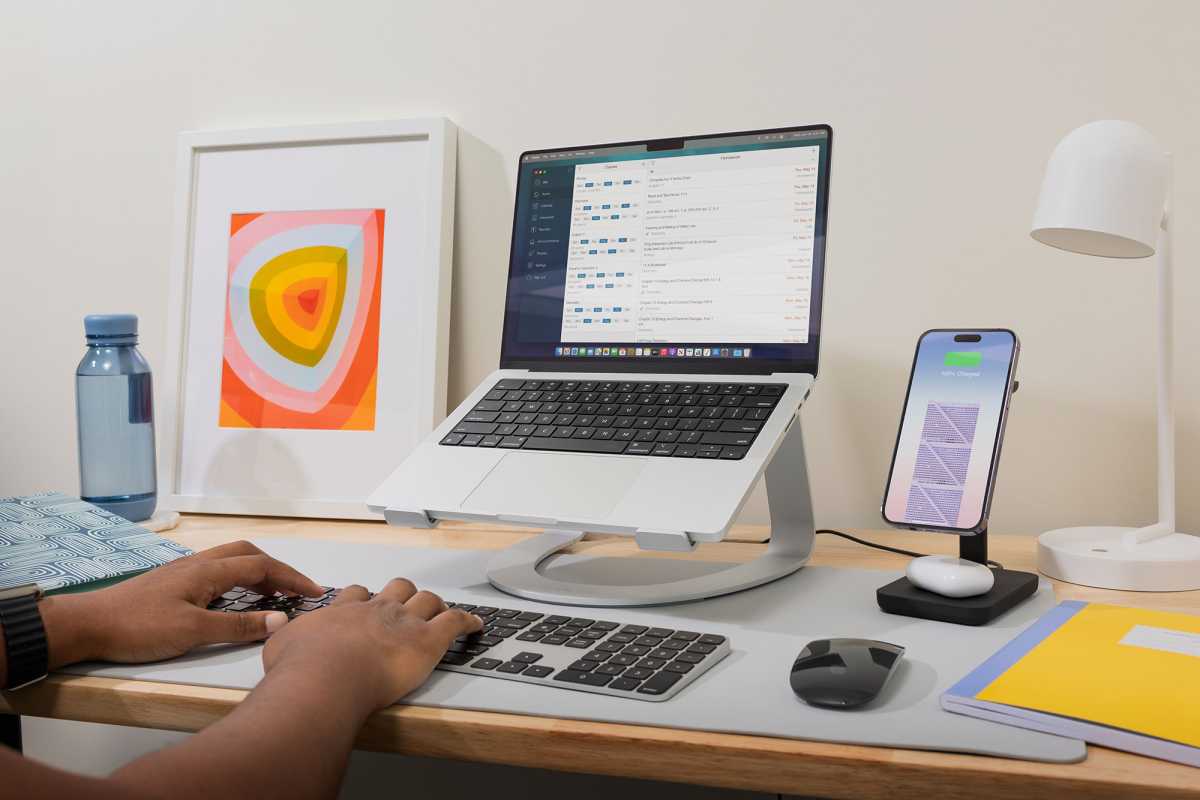
Twelve South
Laptop stand
MacBooks are great, but they’re not exactly designed for comfort and a healthy posture, especially when at a desk. A simple solution is to place your laptop on a pile of books, but a better option is to invest in a laptop stand, which will also increase airflow for better cooling and performance. We’ve tested the best MacBook stands—they’ll work with any laptop—and we have a few favorites.
The $19/£25 Twelve South Curve SE (pictured above) is an inexpensive but stylish stand that elevates your screen 6.5 inches to a healthier, more ergonomic height. It’s a lightweight modular design that makes it easy to pack for the journey to and from college.
A more portable laptop stand is the portable, lightweight, and folding $60/£60 Rain Design Mbar Pro+ that raises your MacBook by 5.5 inches with a tilt that makes viewing and typing a more pleasant and healthy experience. When folded, it measures just 0.5 inches thin and weighs 0.45lbs—perfect for slinging in your backpack and taking to the library or café. It even includes its own svelte carrying sleeve.
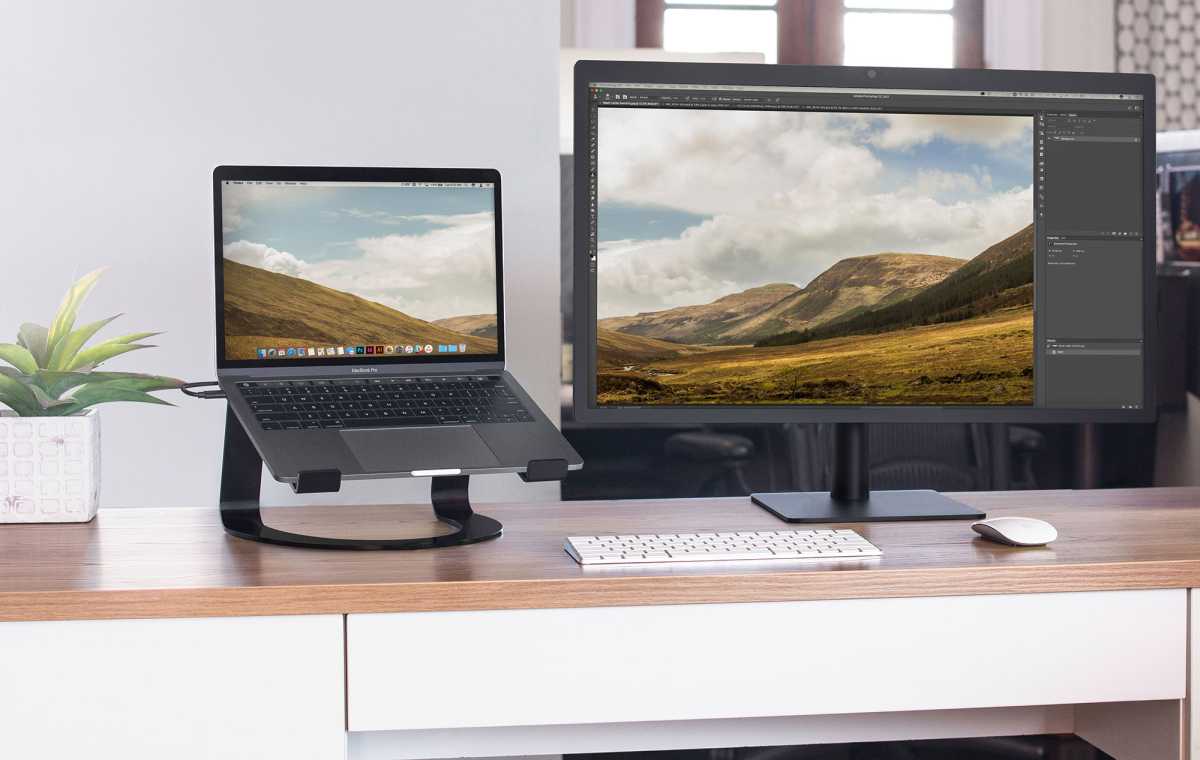
Twelve South
Extra display
A MacBook’s screen is fine for everyday work, but even the 16-inch MacBook Pro can feel small when working with multiple apps and windows open. Having a second larger monitor will make your screen time much more comfortable, productive, and enjoyable, especially when streaming movies. We’ve tested and reviewed the best portable Mac monitors for you.
The ASUS ZenScreen MB249C portable monitor costs $349 or £299 and gives a lot of screen space at 24 inches, but folds into a flat transportable package. Even smaller at 15.6 inches and cheaper ($239), the Plugable Portable USB-C Monitor is also a great pick if you’re worried about packing light. Both connect to your laptop via a simple USB-C cable and can be closed and stored away when you don’t need them clogging up your desk.
A cheaper option is to buy a standard computer monitor. The BenQ GW2491 is a bare-bones 24-inch HD monitor that will get the job done for around $99/£75, and of course, Apple’s high-priced but absolutely stunning Studio Display ($1,599/£1,499) is also an option. For a full range of Mac display choices, check out our best monitors roundup.
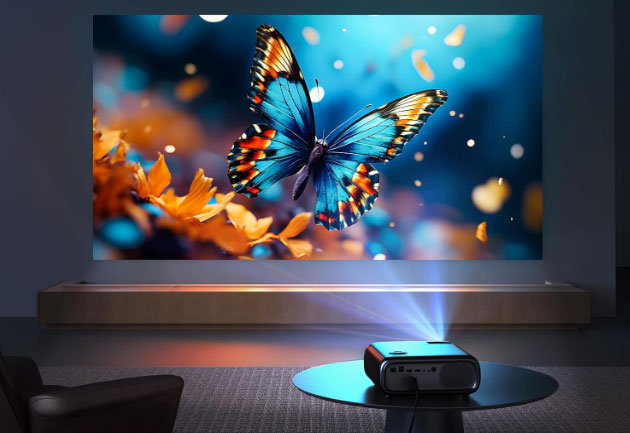
NexiGo
Projector
Who wants to huddle around a small screen when you can beam the latest Netflix hit show into a dorm room wall? While high-quality projectors can run thousands of dollars, budget projectors can be an affordable option for college. In fact, the Philips NeoPix at $120/£132) was recommended to us by parents of students at my daughter’s university for decent video quality and sound.
Further up the price scale is the $279 NexiGo PJ40 (Gen 3) (or £329 at Amazon UK) that is still less expensive than most but offers vibrant images in light-controlled environments with built-in 20W speakers. To get the best picture in rooms that you can’t sufficiently darken, you’ll have to spend more than $500 on a quality projector such as the Epson Home Cinema.
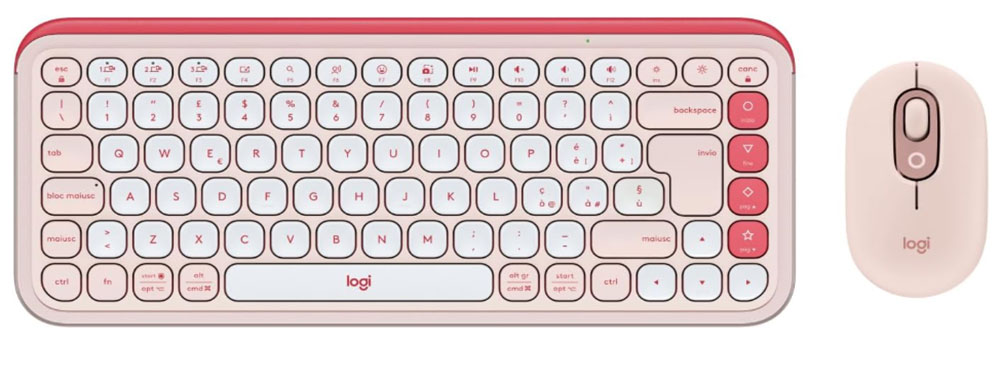
Logitech
Mouse and keyboard
MacBooks obviously come with their own keyboard and trackpad built in, but who doesn’t prefer a more comfortable setup when they’re up all night writing term papers? We suggest you take a look at our roundup of the best Mac keyboards, but here are a few options to get started.
The slimline but solidly built Logitech MX Keys S For Mac is available in either space gray or pale gray for $129/£109), or there’s a more compact version for $99/£70. It’s cheaper than $100-plus Apple’s Magic Keyboard and also more versatile, as it includes a dedicated set of buttons that allow you to pair it with three separate devices, including another Mac, iPad, or even a Windows PC if you really must.
If you want to add a touch of color to your student dorm, consider the Pop Icon series also from Logitech (pictured above), which comes in graphite/green, graphite/white, lilac/off-white, off-white/orange, and rose/off-white. According to the manufacturer, the keyboard has a battery life of up to 36 months, which is most of their college career. You can pick up the mouse and keyboard combo for $66/£69.
For mouse options, check out our recommendations for the best Mac mouse. We recommend the $30/£30 Satechi USB-C Aluminum M1 Bluetooth Wireless Mouse, which comes with a handy scroll wheel for faster, more accurate scrolling and tracking. It has a pleasingly curved ergonomic design made for both left- and right-handed users, and is available in five colors.
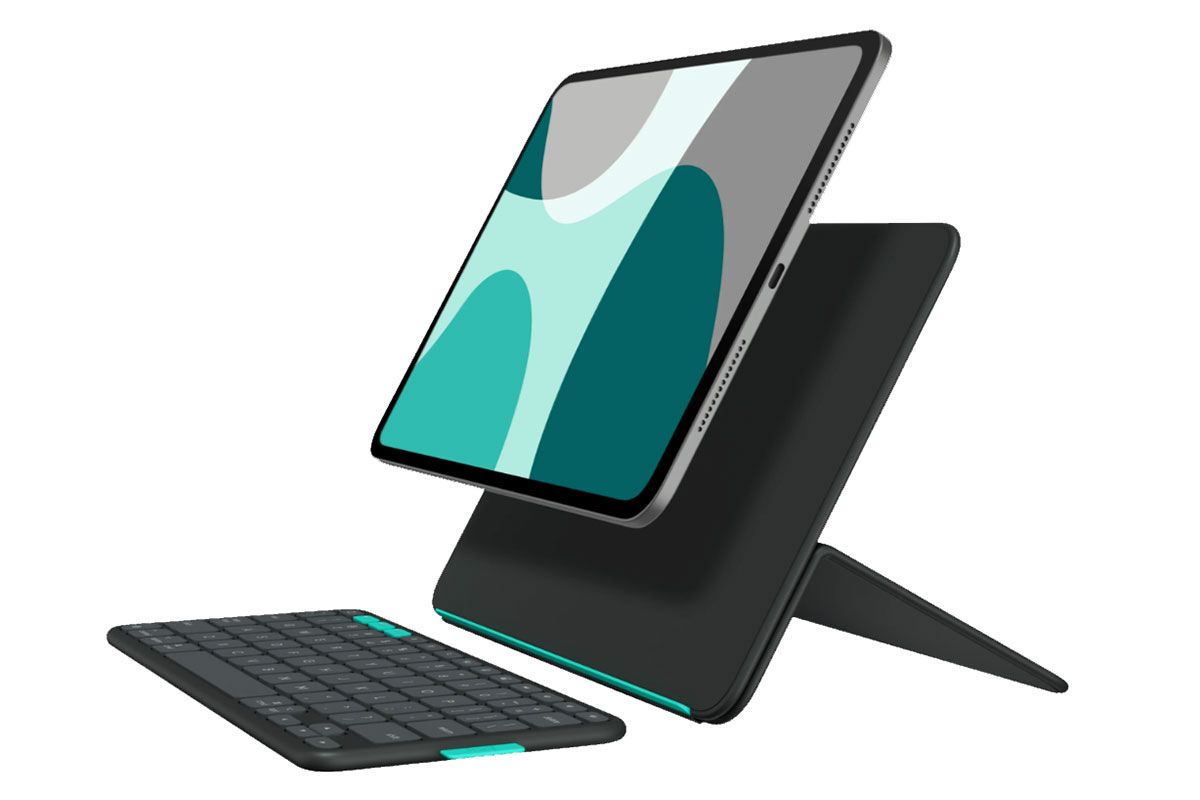
Logitech
If you decide to go with an iPad instead of a laptop for its note-taking fortitude, you can pick up a keyboard and trackpad for it to make it behave like a laptop when you need to write longer assessments.
Apple’s Magic Keyboard is great, but very expensive. One affordable option is the Zagg Tough Keys at $100/£89 that turns an iPad into a laptop setup and is also effective at protecting it from knocks and drops. A more flexible but still protective solution would be the excellent Logitech Flip Folio Keyboard Case (pictured above) that costs $160/£159 and can be removed simply and quickly.
As with any iPad accessory, make sure you are buying for the model that you own! Apple’s iPad naming convention can make this quite tricky!
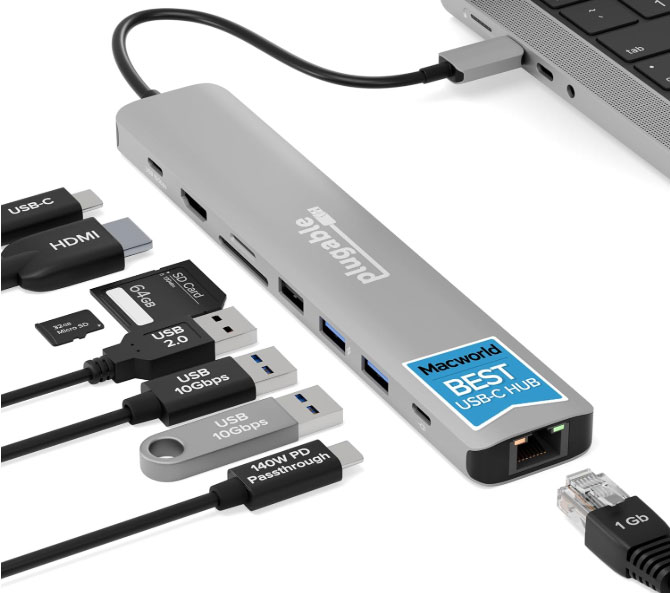
Plugable
Dock or USB-C hub
Laptops are made much more adaptable by connecting them to a docking station that offers more USB ports, HDMI, card readers and Ethernet for more stable network performance (if the student room includes an Ethernet connection, of course). The $45 Plugable 9-in-1 USB-C Hub Multiport Adapter includes two USB-C ports, three USB-A, HDMI, Gigabit Ethernet, SD, and MicroSD card readers, with 125W laptop charging.
Otherwise, picking one depends on the needs of your student, and there are more Mac USB-C hubs and USB-C and Thunderbolt dock options to choose from.
iPad stylus
Using a stylus makes iPad use even more intuitive than a laptop. The Apple Pencil USB-C is a great option for under $100, but if you’re under a strict budget, the Zagg Pro Stylus 2 ($54/£53) is a more affordable alternative to the Apple Pencil with many of the same features, including wireless charging, a replaceable tip, and attaching magnetically to the iPad Air and iPad Pro.
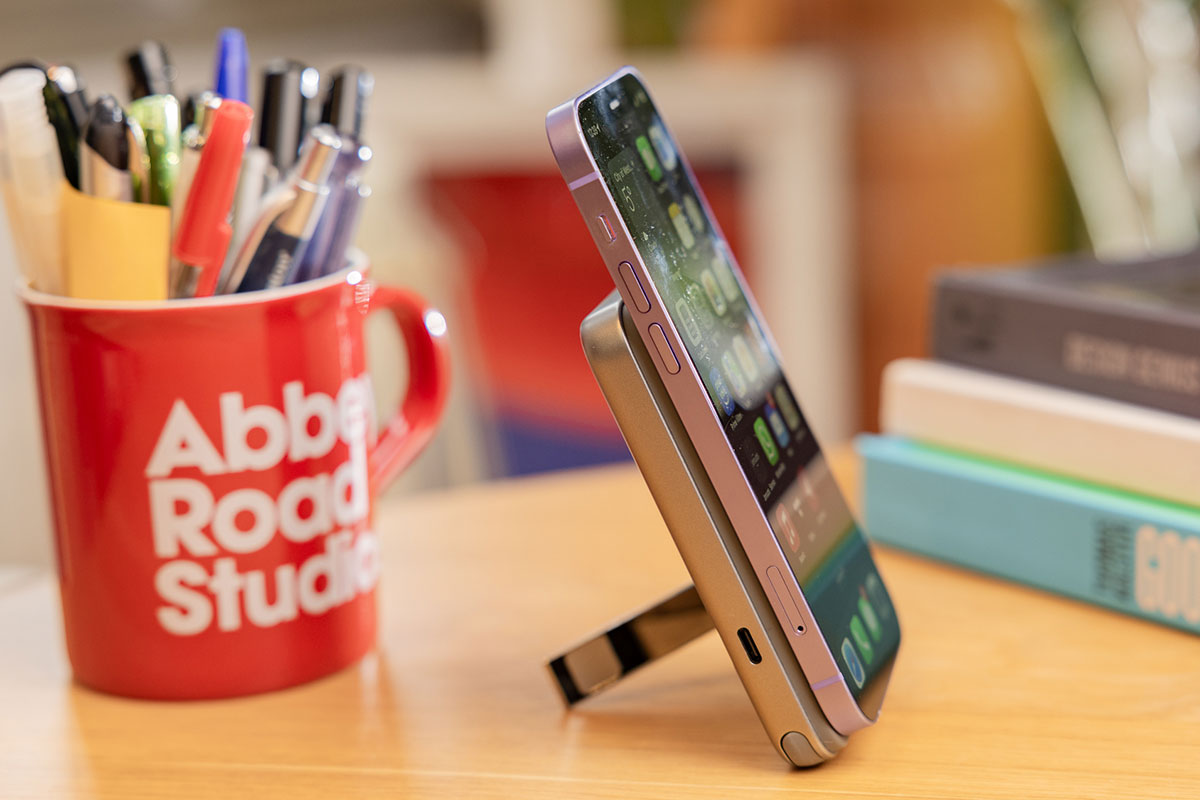
Dominik Tomaszewski / Foundry
Power bank
When out and about, a portable power bank is indispensable for keeping your devices charged when your kid isn’t in their room. For iPhones, we suggest a magnetic power bank that can wirelessly charge your iPhone without a cable. From our long list of the best magnetic power banks, we recommend the EcoFlow RAPID Magnetic Power Bank in either its higher-capacity 10K model ($90) or smaller, lighter 5K version ($60). A cheaper option is the magnetic Baseus PicoGo Power Bank, available in a range of colors for $35/£29.
If you frequently forget to charge your laptop and don’t have a readily available power socket or charger where you go to study, consider a battery pack for your laptop; read about the best power banks for MacBook. A great value 20K laptop power bank is the $30/£27 Cuktech 20K that might be a little slow at 45W, but should get your kid out of a crisis. Or try the faster (67W) Baseus EnerCore CR11 at around $60.
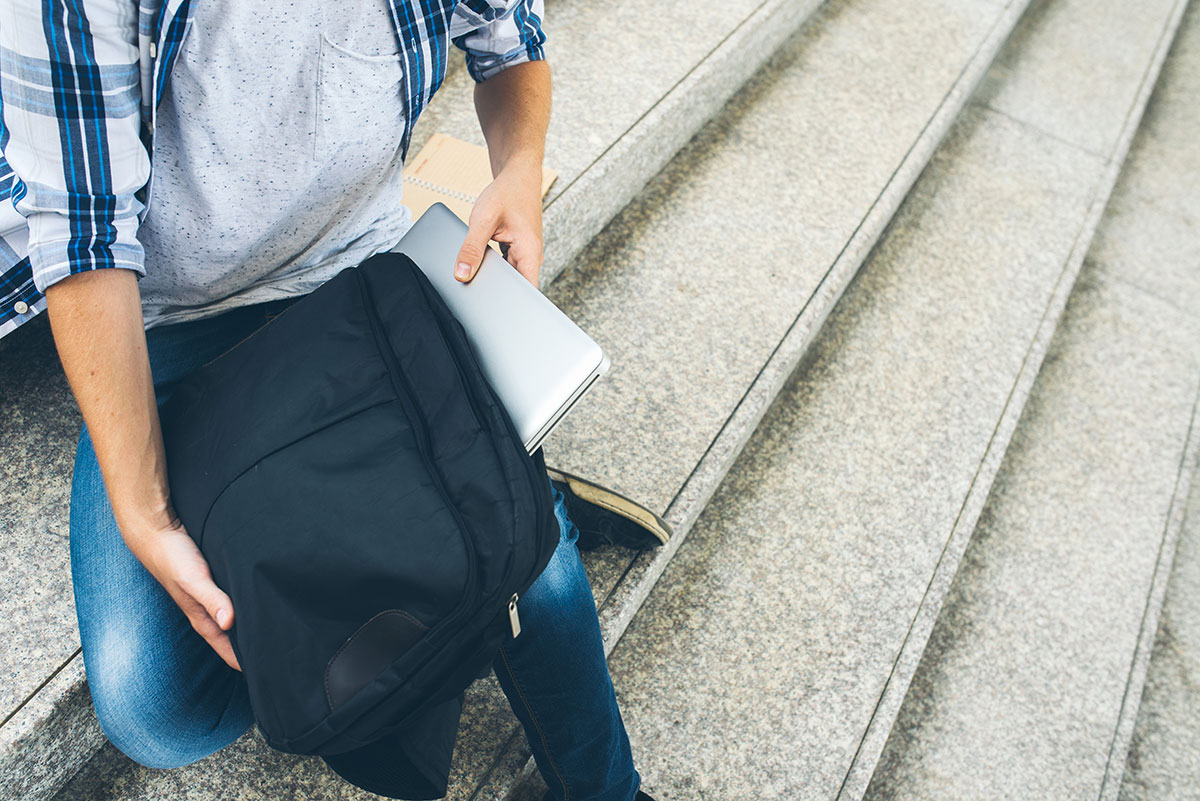
Freepik
Laptop bag
Last but definitely not least, your student will definitely need a decent bag to carry their laptop back and forth from lectures or the library. I say this even though my daughter insisted on carrying her 15-inch MacBook Air around in her completely unsuitable, oversized handbag. The 30-liter Stubble & Co Roll Top I bought her, despite its excellent laptop compartment and good looks, was instead used to drag her shopping back to the residence halls. If they’re like my daughter and don’t want a laptop backpack, then at least consider a laptop sleeve to protect it on its travels.





